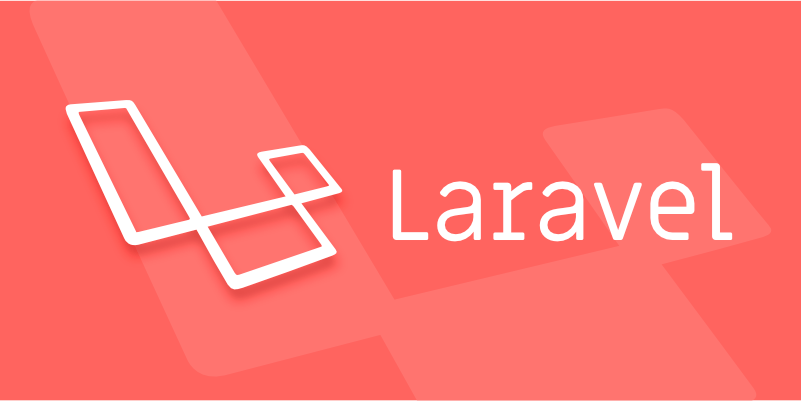Implementing Validation Logic Using Laravel Form Requests
Jul 05, 2025 am 12:06 AMLaravel Form Requests provide a clean and organized way to handle validation. 1. They separate validation logic from controllers, improving code organization. 2. Validation rules are defined in the rules() method of a custom request class. 3. Authorization logic is handled in the authorize() method. 4. Reusability across controllers is enabled by type-hinting the Form Request in controller methods. 5. Laravel automatically returns appropriate error responses, making them ideal for APIs.

When you need to handle form validation in Laravel, using Form Requests is a clean and organized way to keep your controllers slim while encapsulating all the validation logic in one place. It’s especially useful when dealing with complex forms or reusing validation across multiple endpoints.

What Are Laravel Form Requests?
Laravel Form Requests are custom request classes that contain validation rules and authorization logic for handling incoming HTTP requests. Instead of writing validation directly inside your controller methods, you move it into a dedicated class, usually stored in the app/Http/Requests directory.

This approach has several benefits:
- Separation of concerns – Keeps your controllers focused on handling business logic.
- Reusability – You can reuse the same validation logic across multiple controllers.
- Readability – Validation rules are neatly grouped and easy to understand.
To create a Form Request, run:

php artisan make:request StorePostRequest
This will generate a new file under app/Http/Requests/StorePostRequest.php.
How to Define Validation Rules
Inside your Form Request class, you'll find the rules() method. This is where you define your validation logic using Laravel's familiar validation syntax.
For example, let's say you're building a blog and want to validate data before creating a post:
public function rules()
{
return [
'title' => 'required|string|max:255',
'content' => 'required|string',
'category_id' => 'required|exists:categories,id',
];
}A few things to note here:
- Each rule is associated with a form input name.
- You can use array-based rules if needed, like checking multiple values.
- Laravel automatically returns a JSON response with errors if validation fails—perfect for APIs.
Also, you can conditionally apply rules based on the request data. For instance:
'publish_date' => $this->input('is_scheduled') ? 'required|date' : 'nullable',Authorization Logic Inside Form Requests
Form Requests also provide an authorize() method where you can check whether the current user has permission to perform the action.
Here's a basic example:
public function authorize()
{
// Only allow authenticated users to submit this form
return auth()->check();
}If you have more granular permissions, such as only allowing admins to update certain fields, you can do that too:
return $this->user()->can('update-post', Post::find($this->route('id')));Just remember, if authorize() returns false, Laravel will automatically respond with a 403 Forbidden status.
Using Your Form Request in Controllers
Once your Form Request is ready, you simply type-hint it in your controller method:
use App\Http\Requests\StorePostRequest;
public function store(StorePostRequest $request)
{
// At this point, the request has already been validated
Post::create($request->validated());
return redirect()->route('posts.index');
}Because Laravel automatically handles the validation process, you don't need to manually check $request->validate() or deal with error responses.
And if you're working with APIs, the response format will be JSON by default when validation fails, making it ideal for SPA or mobile app backends.
That's how you implement validation logic using Laravel Form Requests. It keeps things clean, reusable, and tightly integrated with Laravel's ecosystem. Not complicated, but definitely powerful once you get used to it.
The above is the detailed content of Implementing Validation Logic Using Laravel Form Requests. For more information, please follow other related articles on the PHP Chinese website!

Hot AI Tools

Undress AI Tool
Undress images for free

Undresser.AI Undress
AI-powered app for creating realistic nude photos

AI Clothes Remover
Online AI tool for removing clothes from photos.

Clothoff.io
AI clothes remover

Video Face Swap
Swap faces in any video effortlessly with our completely free AI face swap tool!

Hot Article

Hot Tools

Notepad++7.3.1
Easy-to-use and free code editor

SublimeText3 Chinese version
Chinese version, very easy to use

Zend Studio 13.0.1
Powerful PHP integrated development environment

Dreamweaver CS6
Visual web development tools

SublimeText3 Mac version
God-level code editing software (SublimeText3)

Hot Topics
 What are routes in Laravel, and how are they defined?
Jun 12, 2025 pm 08:21 PM
What are routes in Laravel, and how are they defined?
Jun 12, 2025 pm 08:21 PM
In Laravel, routing is the entry point of the application that defines the response logic when a client requests a specific URI. The route maps the URL to the corresponding processing code, which usually contains HTTP methods, URIs, and actions (closures or controller methods). 1. Basic structure of route definition: bind requests using Route::verb('/uri',action); 2. Supports multiple HTTP verbs such as GET, POST, PUT, etc.; 3. Dynamic parameters can be defined through {param} and data can be passed; 4. Routes can be named to generate URLs or redirects; 5. Use grouping functions to uniformly add prefixes, middleware and other sharing settings; 6. Routing files are divided into web.php, ap according to their purpose
 What are policies in Laravel, and how are they used?
Jun 21, 2025 am 12:21 AM
What are policies in Laravel, and how are they used?
Jun 21, 2025 am 12:21 AM
InLaravel,policiesorganizeauthorizationlogicformodelactions.1.Policiesareclasseswithmethodslikeview,create,update,anddeletethatreturntrueorfalsebasedonuserpermissions.2.Toregisterapolicy,mapthemodeltoitspolicyinthe$policiesarrayofAuthServiceProvider.
 How do I create new records in the database using Eloquent?
Jun 14, 2025 am 12:34 AM
How do I create new records in the database using Eloquent?
Jun 14, 2025 am 12:34 AM
To create new records in the database using Eloquent, there are four main methods: 1. Use the create method to quickly create records by passing in the attribute array, such as User::create(['name'=>'JohnDoe','email'=>'john@example.com']); 2. Use the save method to manually instantiate the model and assign values ??to save one by one, which is suitable for scenarios where conditional assignment or extra logic is required; 3. Use firstOrCreate to find or create records based on search conditions to avoid duplicate data; 4. Use updateOrCreate to find records and update, if not, create them, which is suitable for processing imported data, etc., which may be repetitive.
 How do I run seeders in Laravel? (php artisan db:seed)
Jun 12, 2025 pm 06:01 PM
How do I run seeders in Laravel? (php artisan db:seed)
Jun 12, 2025 pm 06:01 PM
Thephpartisandb:seedcommandinLaravelisusedtopopulatethedatabasewithtestordefaultdata.1.Itexecutestherun()methodinseederclasseslocatedin/database/seeders.2.Developerscanrunallseeders,aspecificseederusing--class,ortruncatetablesbeforeseedingwith--trunc
 What is the purpose of the artisan command-line tool in Laravel?
Jun 13, 2025 am 11:17 AM
What is the purpose of the artisan command-line tool in Laravel?
Jun 13, 2025 am 11:17 AM
Artisan is a command line tool of Laravel to improve development efficiency. Its core functions include: 1. Generate code structures, such as controllers, models, etc., and automatically create files through make: controller and other commands; 2. Manage database migration and fill, use migrate to run migration, and db:seed to fill data; 3. Support custom commands, such as make:command creation command class to implement business logic encapsulation; 4. Provide debugging and environment management functions, such as key:generate to generate keys, and serve to start the development server. Proficiency in using Artisan can significantly improve Laravel development efficiency.
 How do I install Laravel on my operating system (Windows, macOS, Linux)?
Jun 19, 2025 am 12:31 AM
How do I install Laravel on my operating system (Windows, macOS, Linux)?
Jun 19, 2025 am 12:31 AM
Yes,youcaninstallLaravelonanyoperatingsystembyfollowingthesesteps:1.InstallPHPandrequiredextensionslikembstring,openssl,andxmlusingtoolslikeXAMPPonWindows,HomebrewonmacOS,oraptonLinux;2.InstallComposer,usinganinstalleronWindowsorterminalcommandsonmac
 How do I define methods (actions) in a controller?
Jun 14, 2025 am 12:38 AM
How do I define methods (actions) in a controller?
Jun 14, 2025 am 12:38 AM
Defining a method (also known as an action) in a controller is to tell the application what to do when someone visits a specific URL. These methods usually process requests, process data, and return responses such as HTML pages or JSON. Understanding the basic structure: Most web frameworks (such as RubyonRails, Laravel, or SpringMVC) use controllers to group related operations. Methods within each controller usually correspond to a route, i.e. the URL path that someone can access. For example, there may be the following methods in PostsController: 1.index() – display post list; 2.show() – display individual posts; 3.create() – handle creating new posts; 4.u
 How do I run tests in Laravel? (php artisan test)
Jun 13, 2025 am 12:02 AM
How do I run tests in Laravel? (php artisan test)
Jun 13, 2025 am 12:02 AM
ToruntestsinLaraveleffectively,usethephpartisantestcommandwhichsimplifiesPHPUnitusage.1.Setupa.env.testingfileandconfigurephpunit.xmltouseatestdatabaselikeSQLite.2.Generatetestfilesusingphpartisanmake:test,using--unitforunittests.3.Writetestswithmeth






